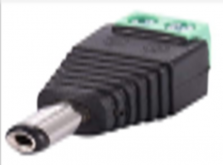NEW BMS’ Extra item to include or have available I the store, it people are going to use External Power they need an adapter for it, either include it or have it on the website. These I believe are ideal, I just received mine so that I can power the BMS from the battery packs own (+) & (-) rather than take the power from the harness. an adapter is easy to get, but add a diode is a trouble, so i don't suggest all users do this on all BMS modles.
Should there be a “filter” or anything extra between this plug & the batteries own +/- ? don't need filter, but a diode is essential.
for the problem, i make many testing with 4S and 8S battery on BMS8T, 16S battery on BMS16T, the testing result is only "power BMS by external socket from 4S battery at 12V" is useful or can avoid the influence of current flow harness. because the current from battery is maximum when 4S battery at 12V. so i don't think it is not essential for other battery or BMS. the root solution is power BMS by AC/DC adapter or by other battery. When power by AC/DC adapter, the cell voltage is very accurate, it is tested by CAL on forum, in fact, when we calibrate cell voltage, the BMS is powered by AC/DC adapter.
As far as cell voltage accuracy, it depends on cell voltage calibration, when calibrate again, the cell voltage reading is improved. power BMS by external socket don't solve the problem. we improved the reference voltage accuracy and changed the cell voltage accuracy testing method after calibration two months ago. now the cell voltage reading is acceptable, it is under 5mv difference compared with FLUKE reading.
as far as current reading, your suggestion is correct, the battery positive and negative cable should be together and short as soon as possible. we updated the current measurement on V4.02, The accuracy is improved, but if it is not stable, need change or add a low pass filter inside of BMS, for different charger, inverter, and cable distance, length, have not perfect solution to solve all problems.




